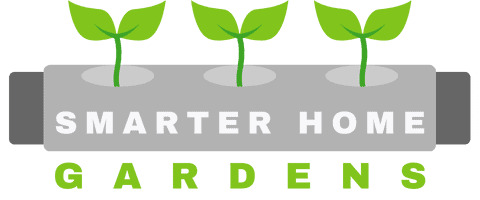This article contains affiliate links. As an Amazon Associate, SmarterHomeGardens.com earns a small commission on qualifying purchases at no extra cost to you.

Hydroponics is an innovative and increasingly popular method of growing leafy greens, herbs, and even root vegetables without the need for soil. As such, many growers choose to have their hydroponics system indoors where they can better control factors like light and temperature, or they simply don’t have outside space.
But is it safe to have a hydroponics system indoors?
Having a hydroponics system indoors is completely safe. Provided growers take reasonable precautions and maintain the system regularly there is little chance of anything going wrong that could either cause damage to your property or jeopardize your well-being.
The top 10 health and safety considerations when running a hydroponics system indoors are:
- Ensuring adequate ventilation
- Electrical safety
- Pest control
- Water quality and contamination
- Fire safety
- Trip hazards
- Structural safety
- Noise
- Leaks and spills
- Chemical exposure and stains
In this article, I’ll explore each of these 10 considerations and provide some top tips for ensuring you can set up your hydroponics system safely and maintain it properly to avoid any future issues.
Let’s dive straight in.
Is indoor hydroponics safe?
Understanding hydroponics
Before we can fully assess the potential safety concerns in hydroponics it makes sense to first examine exactly what hydroponics in general, and what components make up a hydroponics system.
What actually is hydroponics?
As I mentioned in my introduction, hydroponics is a method of growing plants (fruits, vegetables, leafy greens, herbs – anything really), without soil and using only a nutrient-rich solution.
Watch the short video below for a quick overview.
Instead of soil, a growing medium is used such as perlite, rockwool, or clay pebbles to support the seedlings and plants as they mature. The nutrient solution is generally pumped from the reservoir and directed to the plant’s roots.
Different types of hydroponics systems
There are eight different types of hydroponics systems each with its own unique benefits and challenges as well as maintenance and safety considerations.
If you’re interested, I’ve written a whole article on the different types of hydroponics systems (with diagrams). Feel free to check it out and come back to this later
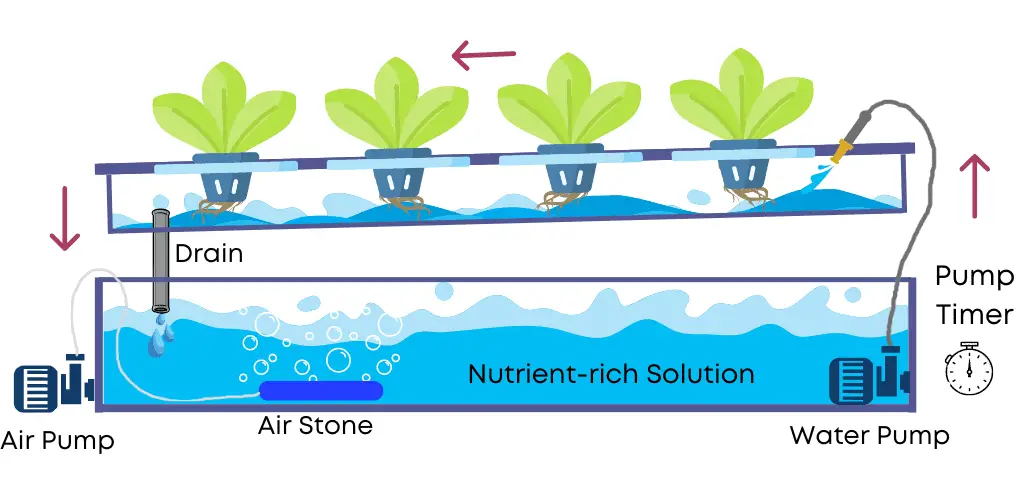
Some are more complex than others. Before choosing a hydroponics system, you should consider carefully whether it’s right for you and your situation.
Nutrient solution and reservoir
The nutrient solution is the keystone of any hydroponics system. Nutrients are usually mixed with water to create a nutrient-rich solution. This solution is generally held within a reservoir, usually at the base of the system.
The reservoir needs to be robust and maintained otherwise leaks can become an issue. Additionally, any damage sustained to the reservoir, in the worst case, could cause significant flooding that could damage your property.
Air and water pumps
Hydroponics systems that utilize either water or air pumps are known as ‘active’ hydroponics systems. These systems are more complex than ‘passive’ systems as they have more moving parts and require electricity to function.
With more moving parts and electricity comes additional maintenance responsibilities and potential safety considerations.
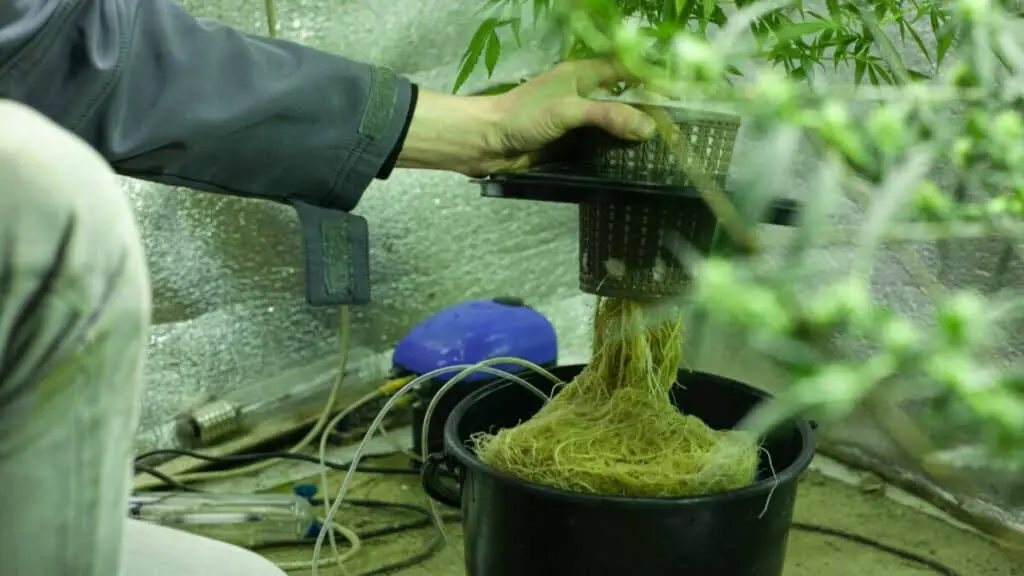
Check out my article ‘how to choose the right air pump size in hydroponic‘.
Top 10 safety considerations for indoor hydroponics
1. Ensuring adequate ventilation
Indoor hydroponics systems require good air circulation in order to prevent mold, mildew, and other contaminants from proliferating. Without it, the plants in your hydroponics system can become infected with sickness and disease. If left untreated, these molds, like Gray Mold, can create respiratory problems in both pets and humans. Adding a simple oscillating fan, like this one, can be enough to ensure adequate ventilation around your plants and prevent any problems.
Check out my ultimate guide on how to prevent and remove mold in hydroponics, if you’re interested in learning more about this topic.
2. Electrical safety
Most hydroponics systems require electricity in order to run the pumps, lighting, or other equipment needed. It’s important to make sure that any electrical components you’re using in the system, are rated for indoor use.
Electrical safety in Europe
You can easily check if electrical components have been marked as safe by checking if they have been rated by an appropriate rating agency. In Europe, the Conformité Européenne (CE) marking is a regulatory standard that verifies certain products are safe for sale and use in the European Economic Area (EEA).

Electrical Saftey in the USA
In the USA, The National Electrical Code (NEC), or NFPA 70, is a United States standard for the safe installation of electrical wiring and equipment. You can also check for the ‘UL’ mark, but note that this isn’t a legally mandatory marking, but a voluntary certification.

Think twice before buying cheap, Chinese components from amazon, particularly if they require a lot of electricity to function. If imported from China, check the China Compulsory Certificate mark (CCC).
3. Pest control
Indoor hydrponics systems can be susceptible to pests such as aphids, spider mites, and fungus gnats. While none will cause a direct safety concern, or harm your health, nobody likes a kitchen full of bugs.
It’s therefore important to consider preventative measures for reducing the build-up of these creatures, such as better ventilation, regular cleaning, and (if you need to) organic, non-toxic insecticide.
4. Water quality and contamination
Water plays an important role in hydroponics. Whether your system is indoors or outside, keeping the quality of your water in top shape is a vital task. Water that is allowed to become stagnant, aside from smelling terrible, will encourage algae growth and lead to potential bacterial infections that could harm your plants and you.
Regularly monitoring the quality of the water in your systems reservoir, and changing it frequently (I usually change it once a month), can help reduce the build-up of contaminants and keep things fresh.
5. Fire safety
Most ‘active’ hydroponics systems employ multiple electrical components such as lights, pumps, and other electrical equipment that all have the potential to create a fire hazard in your home, even though this is unlikely. Make sure you only buy certified products (check point 2 above), and for added security, ensure that fire prevention measures like fire extinguishers and smoke detectors are nearby and functioning correctly.
6. Trip hazards
It almost goes without saying that a hydroponic system indoors, particularly if that system is bulky, could create an obstacle in your home. As I’ve mentioned, most hydroponics systems are ‘active’ and require power to operate. Power usually means wires. If you’re going to have your hydroponics system in the house, consider carefully the placement of these wires, as well as any other equipment.
Position the system away from popular thoroughfares, tidy up any wires and cords, and make sure accessories like lights and fans are properly secured and won’t get knocked over by your pets or children.
7. Structural safety
Hydroponics systems can be heavy, especially when the reservoir is filled with nutrient solution. They require strong, stable support. This means you need to make sure that whatever surface you place your system on, be it shelving, a table, or the floor, needs to be sturdy enough to support the weight of the equipment.
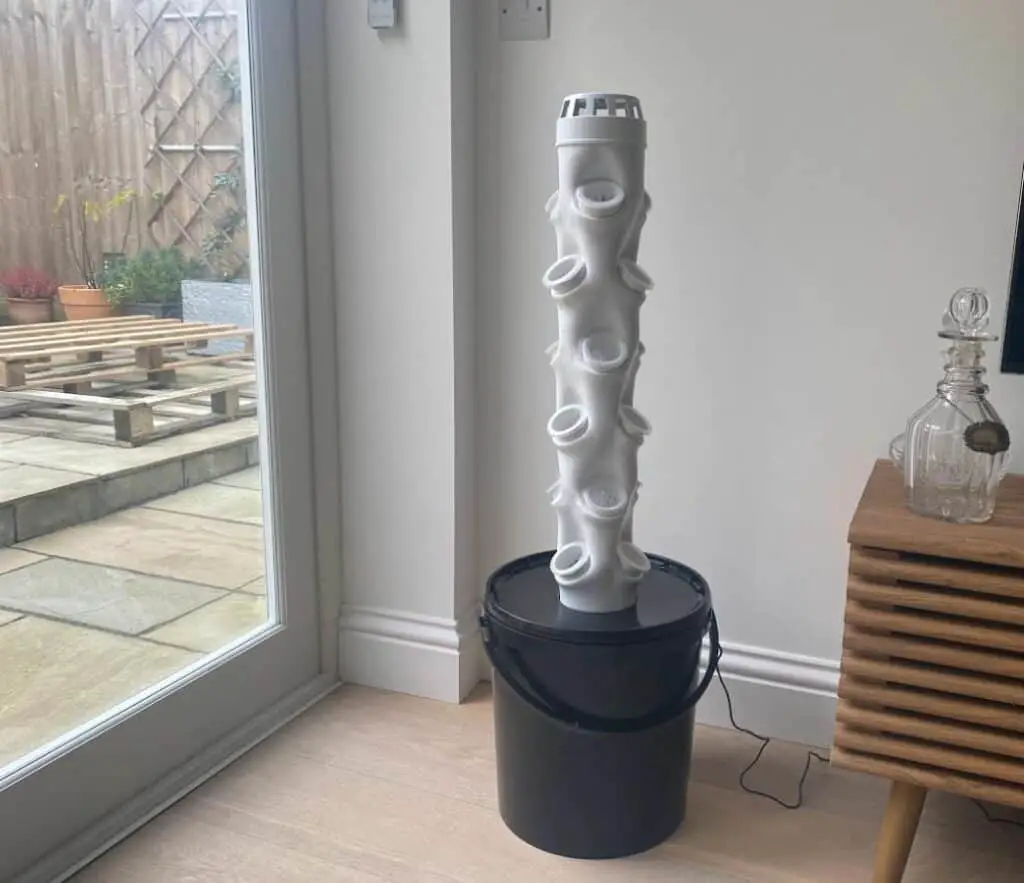
It’s important to think ahead too, as the additional weight added by growing plants can substantially increase the overall weight of the system.
8. Noise
While most hydroponics systems do not make very much noise it should still be a consideration and will influence where you place the system in your home.
If you’d like to know more about this particular topic, I’ve written an entire article about it: Do hydroponics systems make a lot of noise?
The humming and trickling of water may disturb some people. It’s best therefore to place your system in a location where there are no people, or where background noise isn’t a problem. I wouldn’t, for example, advise placing your system in a bedroom as this can disturb sleep, resulting in increased anxiety and stress.
9. Leaks and spills
When handling or refilling the reservoir, replacing the nutrient solution, or cleaning the pumps and tubing, water spills can occur. In the worse cases, hydroponics systems can leak, causing water to spill onto the floor (though this is rare if the system is properly maintained and handled with care).
Ensuring that any spills and leaks are mopped up quickly can reduce the risk of slips and falls. You can also place the system on top of an absorbent pad, or towel to further reduce the risk.
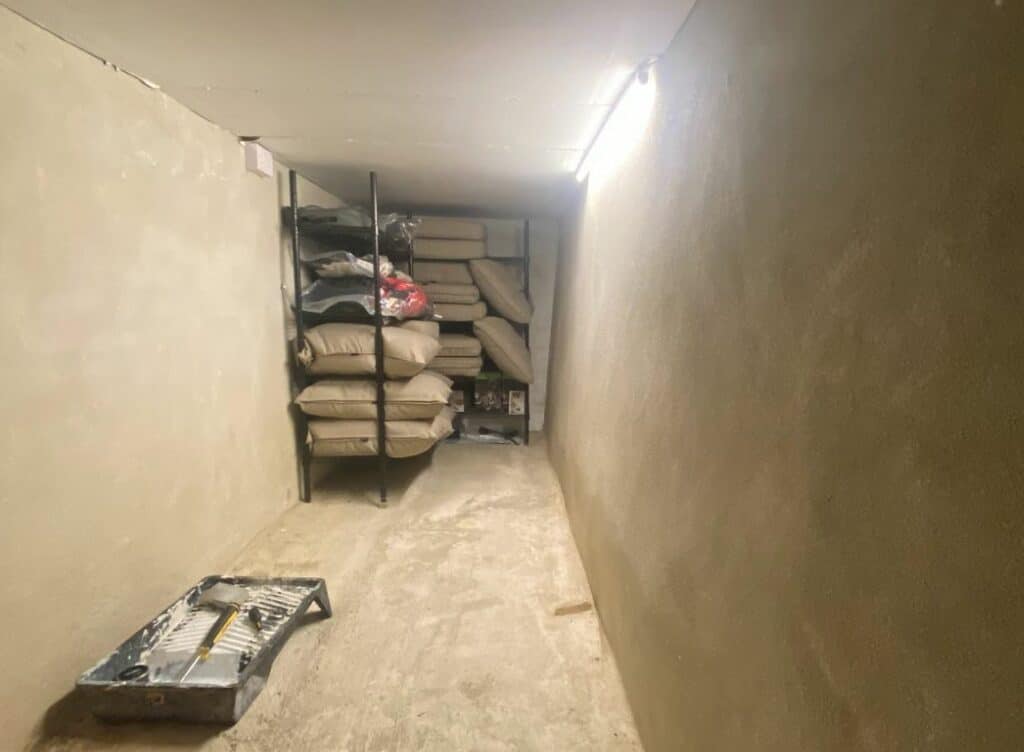
10. Chemical exposure and stains
Hydroponics systems require the use of fertilizers, pesticides, and other chemicals to support and maintain healthy and productive plant growth and control pests. While I’d always advocate for the use of organic products in hydroponics, it’s important to handle all chemicals with care to minimize your exposure and prevent any harmful effects.
Ensure that you always wear appropriate protective equipment, like gloves and eye goggles, particularly when handling synthetic chemicals. Make sure that you store any of these chemicals in a secure location where nobody can access them except you.
Additionally, take care when handling such items indoors. I know from personal experience the problems liquid fertilizers can cause if they accidentally spill on your carpet (which is still stained to this day).
Tips for safe indoor hydroponic systems
Hydroponics systems are safe to have inside your home and it’s very unlikely that anything will go wrong that can cause genuine health and safety concerns. However, it’s always better to be prepared. For me, there are three key interventions you can do to reduce the risk and give yourself some peace of mind.
1. Only buy certified safe products
In a ‘worst case scenario’, for me, fire risk is the biggest health and safety concern with running my hydroponics systems indoors. No matter how unlikely, I still worry about running electricity through the system 24/7, especially when I’m not there to monitor things. One of the best ways to reduce this risk is to only buy safety-certified electrical components. In Europe, this means the ‘CC’ mark. In the USA, the equivalent ‘UL’ cert is one to look out for.
2. Install adequate safety measures (in case of an emergency)
While you can never completely eliminate the risk of equipment failure or something going wrong, you can certainly prepare for it. That’s why I have implemented some additional safety measures so I stand a better chance of dealing with problems if they arise. For me, this means having a working fire extinguisher nearby, as well as fresh towels to deal with any potential leaks/spills quickly.
3. Regular monitoring and maintenance
Nothing beats regular monitoring and maintenance of your indoor hydroponics systems. Keeping the system clean is one thing, but checking each component for blockages, cracks, and other defects on a monthly basis is a good habit to get into. This will help you spot potential faults early, and allow you to take steps to fix them before they become a problem.
The benefits of indoor hydroponics
Indoor hydroponics systems can offer growers a range of unique benefits, including:
Increased control
Indoor hydroponics allows growers to precisely control growing conditions, such as temperature, light, and air circulation. Better control over important aspects of the growing process will help indoor growers to get better yields, grow their plants faster than outdoor equivalents, and improve the overall quality of their plants.
Higher-yields
One of the main benefits of hydroponics is the ability to grow plants faster and more efficiently than other types of more traditional gardening. While you can have great results for both indoor and outdoor systems, better control of the environment indoors can help to create more productive plants with higher yields if managed correctly.
Year-round growing
The main benefit of growing plants hydroponically indoors is that you can grow plants all year round. Gone are the traditional limitations of fall and winter. No more having to wait until spring. Regardless of the weather, or the season, with an indoor hydroponics system, you can grow plants successfully, providing you with a consistent supply of fresh produce.
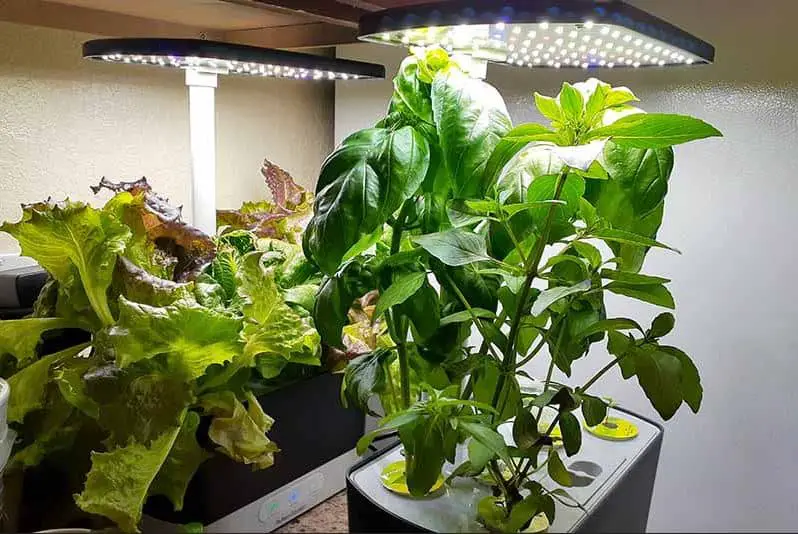
I’ve written an article about this called: The 13 amazing benefits of vertical gardening. If you’d like to know more, please read it.
Final thoughts on indoor hydroponics safety
To sum up, indoor hydroponics systems can be a great way to grow plants efficiently and sustainably, it’s important to understand the potential risks and take the necessary precautions to ensure the system is safe and properly maintained. While some risks may be high-impact, their likelihood is extremely low. In general, with the right equipment and maintenance, indoor hydroponics systems can be a safe and effective way to grow plants indoors.
